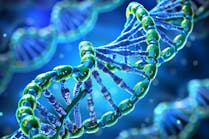American Indian and Alaska Native men less likely to receive prostate cancer screening
New research from Wake Forest University School of Medicine shows that American Indian and Alaska Native men are less likely to be screened for prostate cancer compared to other racial/ethnic groups.
The study appears online in Cancer Causes & Control.
For the study, researchers conducted a secondary analysis of the National Ambulatory Medicare Care Survey (NAMCS) datasets from 2013-2016 and 2018 and the NAMCS Community Health Center (CHC) datasets from 2012–2015. NAMCS is a nationally representative sample of visits to non-federal office-based physician clinics while the CHC samples include outpatient visits to physicians, physician assistants and nurse practitioners at community health centers including federally qualified health centers and Indian Health Service clinics. In the NAMCS dataset, researchers analyzed 509,737,580 visits over a five-year period of which 232,998 were for American Indian and Alaska Native men.
In the NAMCS dataset, the rate of PSAs being ordered for American Indian and Alaska Native men was 1.67 per 100 visits but included no DREs. The rate of PSAs for non-American Indian and Alaska Native men was 9.35 per 100 visits while the prevalence of DRE was 2.52 per 100 visits.
In analyzing the CHC dataset, the researchers noted that American Indian and Alaska Native men had slightly lower rates of PSAs (4.26 per 100 visits v. 5.00/100) and DREs (0.63 per 100 visits vs. 1.05 per 100) than non-Hispanic White men, but this difference was not statistically significant.
Current screening guidelines recommend that providers use shared decision-making to discuss the benefits and risks of PSA and DRE because current screening tools can lead to false-positive results and the need for more aggressive testing. As men age, the risk of a false-positive result also increases.




